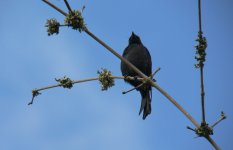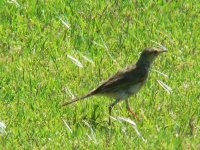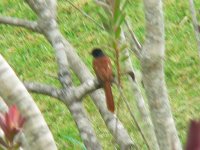I have recently returned from a holiday in South Africa and these birds were seen along the Garden Route.
I think the 1st one could be a Drongo?
2nd ?
3rd pos. Paradise Flycatcher?
(sorry aboy the poor quality, but i didn't have time to focus before it flew off)
Thank you.
......................
Mary
I think the 1st one could be a Drongo?
2nd ?
3rd pos. Paradise Flycatcher?
(sorry aboy the poor quality, but i didn't have time to focus before it flew off)
Thank you.
......................
Mary







